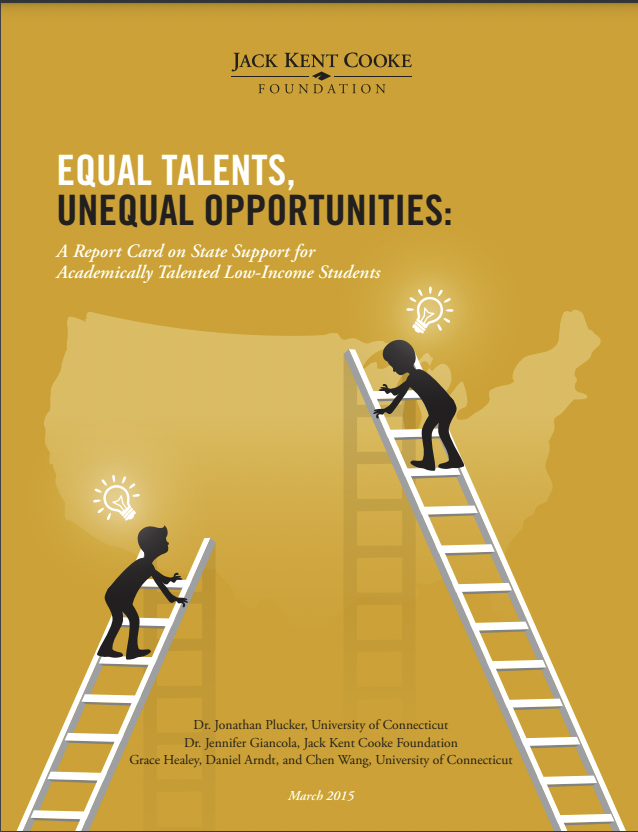Login |
|
|
Diversity, Equity & Inclusion
The resources and information on this page underscore the need for policy and advocacy to
support equal access to advanced programming nationally and in Illinois.
IAGC is proud to release the LearnLong case study report: |
A Call for Equal Access to Advanced and Gifted Programming Services in Illinois Schools:Gifted children are found in every socio-economic strata and racial group. However, the delivery of services in Illinois is not equitable in Illinois. The following realities in Illinois perpetuate these inequities:
The Excellence Gap refers to disparities in performance at advanced levels between groups based on socio-economic status and race. lllinois currently has among the largest academic excellence gaps in the country.
Pursuant to the Illinois Report Card Act, as of 2020, the State Board must include demographic information concerning gifted education and advanced academic programs on the school report card.
| Resources and Events:
CLICK to view additional sources on the bottom of this page. Join the IAGC to support our advocacy mission for Equity, Diversity, and Inclusion |
The following studies reveal that Illinois lags behind the national averages when it comes to opportunity and excellence gaps in gifted programming: |
Thomas B. Fordham Institute Study (2018): This Fordham Institute study by Christopher Yaluma and Adam Tyner concluded that gifted programs are just as likely to appear in high-poverty schools as in low-poverty schools 68.3% of elementary/middle schools report having gifted programs). However, students in high poverty schools are significantly less likely to participate in gifted programming. In addition, Black and Hispanic students participate in these gifted programs at a much lower rate than their Asian and White counterparts. Illinois: Illinois does not compare well with the national average, as only 32.8% of high poverty schools in Illinois offer gifted programming. |
Jack Kent Cooke Report, 2nd Edition (2018) The Jack Cooke Kent report by Dr. Jonathan Plucker, Dr. Jennifer Glynn, Grace Healey, and Dr. Amanda Dettmer, includes data from each of the fifty states about gifted education policies. The report reveals that large excellence gaps at high levels of performance exists in nearly all of the states. "A-F" state rankings are assigned according to state policy "inputs" such as requiring services for identified advanced learners, acceleration and early entrance policies, concurrent and dual enrollment, accountability models including growth measures for high ability children, and gifted coursework required in teacher and administrator training. Output rankings related to student achievement are also assigned. Illinois: The study assigned Illinois a C ranking based upon the inputs and outputs considered. | System Failure: Access Denied -Gifted Education in the United States: Law, Access, Equity, and Missingness Across the Country by Locale, Title I School Status, and Race (2019): This research report by Marcia Gentry, Anne Gray, Gilman W. Shiting, Yukito Maeda, and Nielsen Pereira discusses the educational system's failure to provide access to advanced programming for diverse student groups."Missingness" describes students who could/should have been identified, but are missing because schools do not identify students and/or students are underidentified. Nationally, this describes 39%-53% of students, mostly from Title I Schools and/or underserved populations. Nationally, 67.38% of students ("D" Rating) attend a school that identifies students with gifts and talents. Illinois: Missingness describes 75% to 78% of students, with most of these missing students coming from Title I schools and from underserved populations. The report reads,"With an unfunded mandate that does not require identification or services, only 25% of Illinois students ("F" rating) have access to identification." (System Failure: Illinois Report Card) | Inequities in Advanced Coursework: What's Driving Them and What Leaders Can Do (2020) The Education Trust is a national nonprofit that, through research and advocacy, works to close opportunity gaps that disproportionately affect students of color and students from low-income families. The study finds that, in addition to lack of gifted and advanced programming at many schools, "nationally, inequities are largely due to (1) schools that serve mostly Black and Latino students not enrolling as many students in advanced classes as schools that serve fewer Black and Latino students; and (2) schools – especially racially diverse schools – denying Black and Latino students access to those courses." Illinois: According to this study, 27% of students in Illinois attend schools that offer gifted programming. This opportunity gap creates barriers that widen excellence gaps. For example, in Illinois there are 53 Black and Latino students enrolled for every 100 Black and Latino students who would need to be enrolled to have fair representation. In 8 out of 42 states, Latinos are underrepresented in gifted and talented programs across schools that offer such programs. Latino students have fair/close to fair representation in the other 34 states. |
Additional Resources:
Books:
Journal Articles:
Tip Sheets and Guides:
|



